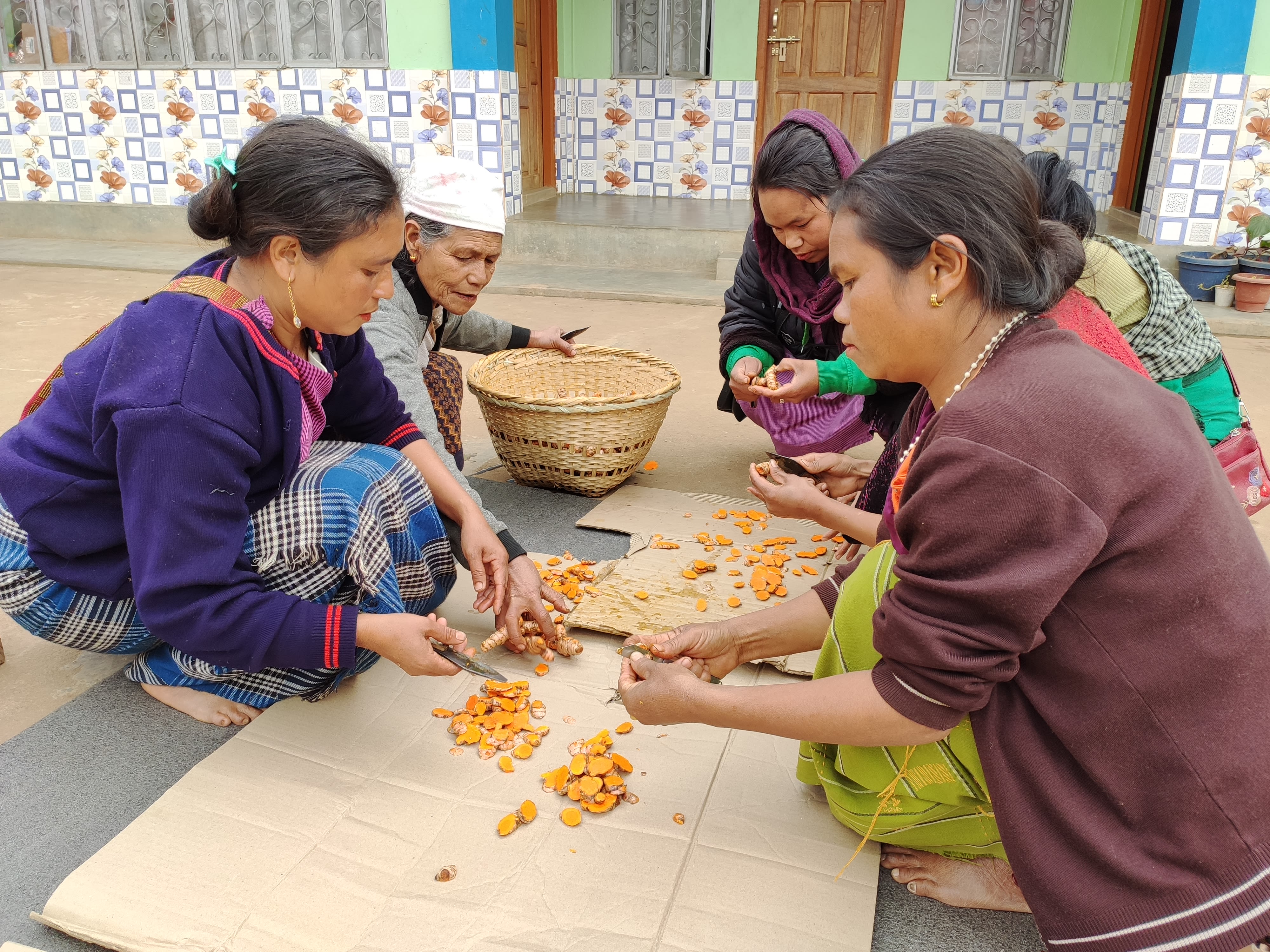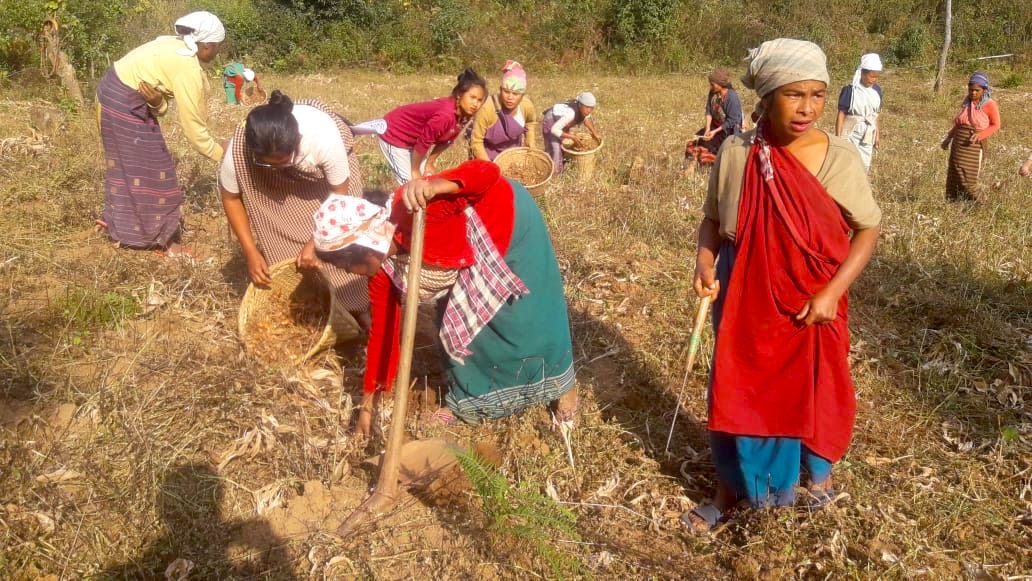‘Miracle spice’ changing lives of women in Indian village
Church program in rural India giving hope and empowering women to be self-reliant while doing the "impossible" as a "service to God"

Maria Aibor has been farming since she was a child. She learned about planting crops and irrigating fields from her parents. Now in her 40s, Maria says farming has always been a “service to God” for the people of her community. It provides them with livelihood and sustenance.
She hails from the northeastern state of Meghalaya in India. Her hamlet is located in an area called Jaintia Hills. The place is often referred to as an abode of clouds with fertile lands and lush green crops.
Most residents in the area, including Maria’s family, have long abandoned farming. The pervasive use of chemical fertilizers has turned most of the fertile soil barren.
The lack of knowledge about scientific methods that could have enhanced productivity is also a reason for people to switch to other sources of living.
“We used to grow a variety of crops here, such as ginger, garlic, and potato,” Maria tells LiCAS News. Over time, however, the land could not produce the amount of harvest that is expected.
“For that reason, we suffered losses and my husband went out to do menial jobs in town,” adds Maria.
She says even while the family was toiling hard from dawn to dusk, it was becoming difficult to make both ends meet.
“We were struggling, and so were other households in our village,” says Maria.
“My husband would earn no more than 5,000 rupees (about US$70) a month. It was difficult to keep the pot boiling at home,” adds the mother of two daughters.
Background photo by Karl Solano
Church intervention
An investigation done by the social action arm of the Catholic Church in the area in 2020 found that the prevalence of the use of chemical fertilizers, the degradation of the soil, and plummeting yields are among the reasons why people stopped farming.
As per the Soil and Water Conservation Department of the state of Meghalaya, the area is highly susceptible to acute soil erosion problems due to its undulating topography and high intensity rainfall. The primitive and destructive cultivation practices also enhance the degenerative trends of the soil.
“Further rampant deforestation, wildfires, extensive grazing, unscientific mining and quarrying … are adversely affecting the overall ecological condition of the State,” reads a government report.
The place where Maria lives, however, is also known for its high-quality turmeric, a key ingredient in most Indian cuisines and with a plethora of medicinal properties.
It is often called a “miracle spice.”
“Lakadong” turmeric is a special turmeric found in Maria’s village. In Ayurvedic medicine, the spice is valued for its anti-inflammatory, antioxidants, and antidepressant properties and is also vital for Alzheimer’s disease prevention.


Meghalaya “Lakadong” turmeric are selected and hand-cut by the women in Maria Aibor's village. (Photo by Peerzada Ummer / LiCAS.news)
Meghalaya “Lakadong” turmeric are selected and hand-cut by the women in Maria Aibor's village. (Photo by Peerzada Ummer / LiCAS.news)
“What we found was that almost all households there at the hamlet had some piece of farmland where they could have cultivated this turmeric,” says Denis Kurkalang of the Jaintia Hills Development Society (JHDS), the social wing of Diocese of Jowai.
He noticed, however, that the villagers “were lacking the skills of cultivation and modern scientific techniques to make the yields profitable.”

“Lakadong” turmeric from Maria Aibor's village. (Photo by Peerzada Ummer / LiCAS.news)
“Lakadong” turmeric from Maria Aibor's village. (Photo by Peerzada Ummer / LiCAS.news)
With the help of the Church, a program was launched to introduce new techniques for large-scale cultivation of turmeric in Jaintia Hills.
At first, women farmers' clubs were established where members are encouraged to learn new skills and discuss their financial needs.
Each club is composed of at least 10 women who are trained in turmeric cultivation. They are provided with a grinder and a solar-powered drier to process and pack the produce.

Maria Aibor busy in cultivation of turmeric in her village with other women of her club. (Photo by Peerzada Ummer / LiCAS.news)
Maria Aibor busy in cultivation of turmeric in her village with other women of her club. (Photo by Peerzada Ummer / LiCAS.news)
Background photo by ronnarong
Offering hope
Within a year, the change on the ground was evident.
The women were able to cultivate thousands of “Lakadong” turmeric in a two-acre piece of land and made a profit of about US$2,000 during the initial harvest. The profits, which are divided equally among members, have since multiplied.
“What was impossible some time ago has become possible now by the grace of God.”
She says that women have become “self-reliant” with their decent living.
“In fact, they are now encouraging their husbands to take a plunge in the business and not to look for menial jobs in towns,” added Susngi.
“The program of cultivating turmeric in our homes has come as a blessing from Lord,” says Patricia Shyla whose husband abandoned farming to drive a tourist taxi for a living.
“I wanted to help him but I had no means to work,” she adds.
After she joined the Church program, she now earns more than US$150 a month.
“My husband does not have to spend long hours driving. He now works for only eight hours and spends time with the family,” says Patricia.
For Maria, life has never been the same since she took part in the Church program.
“I now plan to send my children to a private school. I am buying them new books to read and new clothes to wear,” she tells LiCAS News.
“All this is exciting. I was not expecting that turmeric would be in such high demand,” she says, adding that every day “we wake to find new hope, hope of making our lives better.”
With generous support from missio Aachen
and
Text by Peerzada Ummer
Published June 20, 2022
© Copyright MMXXII LiCAS.news


Women cleaning turmeric. ‘Lakadong’ Turmeric is a special turmeric; in ayurvedic medicine, the spice is valued for its anti-inflammatory, antioxidants and anti-depressant properties. (Photo by Peerzada Ummer / LiCAS.news)
Women cleaning turmeric. ‘Lakadong’ Turmeric is a special turmeric; in ayurvedic medicine, the spice is valued for its anti-inflammatory, antioxidants and anti-depressant properties. (Photo by Peerzada Ummer / LiCAS.news)
